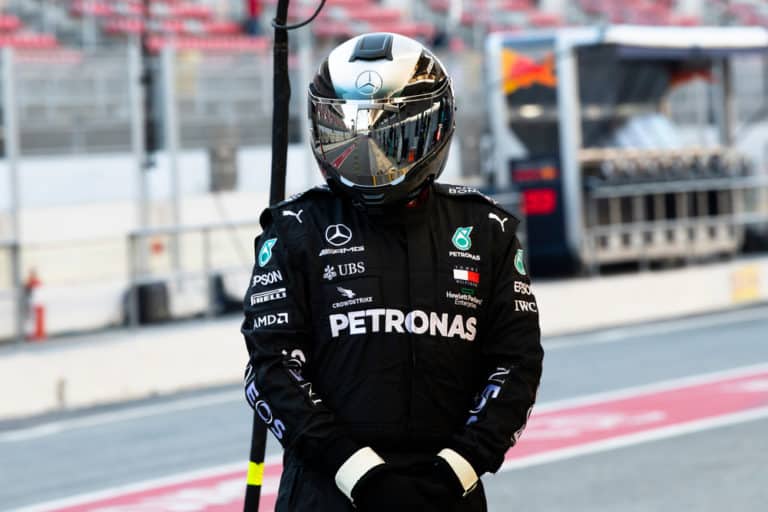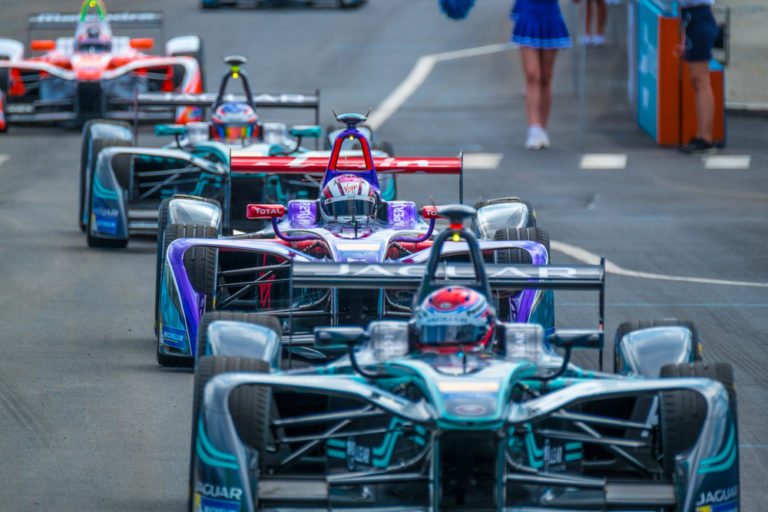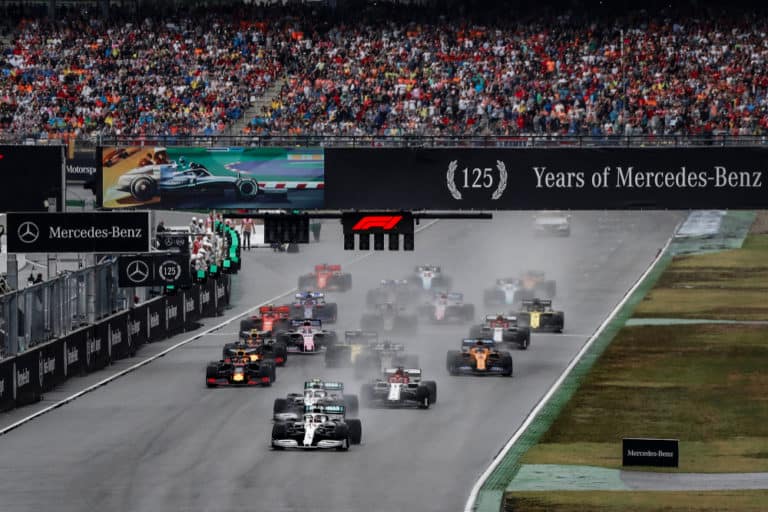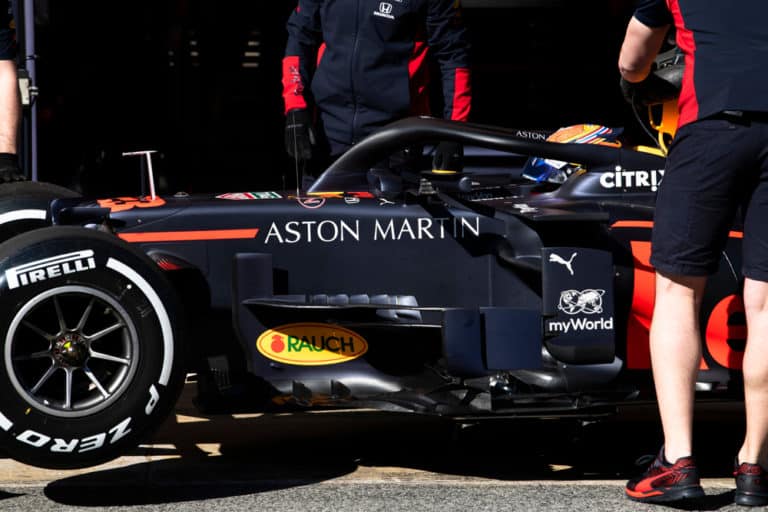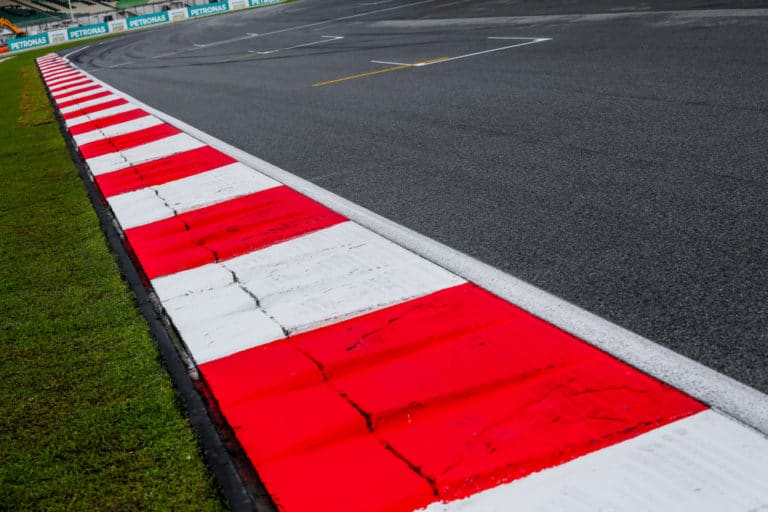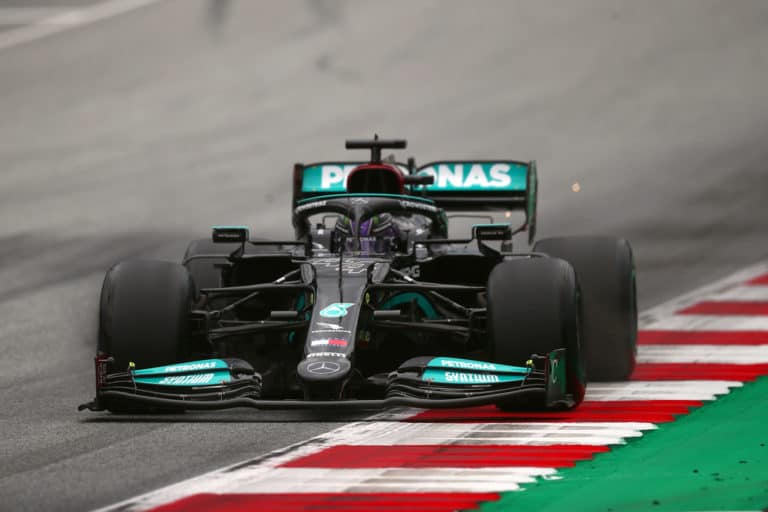Helmets are an essential part of the identity of the drivers. Together with their number, it is the element that allows us to differentiate them from the rest of the drivers. Some use the same helmet livery throughout their sports career, others change it from time to time, and there are races in which they use unique special designs for some reason or another.
Some drivers use more creative and extravagant designs to decorate their heads, while others use classic and simple designs.
This is our top 15 of the best helmets in history, in which we will find both classic and more modern helmets. Some have been the hallmark of many drivers, while others have been special one-off designs. It has not been easy to choose from among so many designs and eras, and it is something very subjective, so we may not agree on many of them, but here you have it:
If you’re looking for some F1 merchandise, check out the awesome stuff at the official F1 store here.
1. Ayrton Senna
I think anyone would agree with this position. The Brazilian driver has become more than an F1 legend, and his legacy lives on. It is the most iconic and recognizable helmet in all of F1 history, both for its design and who wore it.
The design is quite simple and remained practically unchanged the entire time, except for his John Player Special years at Lotus between 1985 and 1986, where it went to a fluorescent yellow. The design consists of a yellow base, a top green stripe outlined with two black stripes, and a lower black stripe entrapped by two green stripes. It looks good with any car, especially the red and white McLaren. Name a more iconic duo, I’ll wait.
In addition, it is a helmet that has had a great impact and influence on many of the drivers’ designs from the past and present. Lewis Hamilton used to have a yellow helmet with reference to Ayrton on the back, while Fernando Alonso uses that background color too to form the flag from Spain. Mika Häkkinen and Eddie Irvine wore helmets with the same design as Ayrton’s but with different colors.
2. François Cevert
François Cevert was one of the greatest lost talents in the history of F1. He was one of a kind, an iconic playboy from the F1 of the 70s in a romantic era of the sport.
He raced in 47 Grands Prix, getting thirteen podiums and one victory. Paradoxically, he found that one victory (United States Grand Prix) also found his death at Watkins Glens in 1973. He competed four seasons with Tyrrell and Jackie Stewart, forming one of the most complete pairs on the grid. The good relationship of both drivers fostered a great atmosphere and functionality in the team.
François Cevert’s helmet is so simple, but it just seems so right. The helmet consists of a white base, with two thick stripes in the center, one red and one blue, with a thinner yellow one in the middle. On the sides, there is a blue circle with his name printed in white. The color scheme looks great and looks pretty quick while still being classic and timeless.
3. Nelson Piquet
Nelson Piquet is one of the best and most legendary drivers in the history of F1, triple world champion in 1981, 1983, and 1987. His helmet is as recognizable as his character on and off the track, and he wore it throughout his sporting career.
The helmet designs consist of a white base with a red teardrop motif on each side and bands of the same color that surround them and go to both the top and the bottom of the helmet.
It is a very clean pattern, and the combination of both the white and the red with the teardrop motif makes it quite beautiful and recognizable. It has a special vibe when looking at it in the old photos with the cars and the photographic quality of the time—a vintage icon.
4. James Hunt
James Hunt was more than a rebel and an F1 playboy. He smoked, drank before races, and was always surrounded by women. His image is one of the most iconic in F1 history. He was the second McLaren world champion in 1976 and raced in 92 races, obtaining 10 victories and 23 podiums.
His helmet has also gone down in history as one of the most famous, although it is not as extravagant as his personality, as it is a fairly simple design.
His helmet consists of a simple black design punctuated by three blue, yellow, and red stripes, and his name in big, bold white letters. The stripes represent the colors of Wellington College, where Hunt began to study medicine before leaving it to dedicate himself to car racing.
Kimi Raïkkönen wore helmets painted like Hunt on a few occasions in 2007 and 2013 as a tribute to him. In the movie Rush, you can see Hunt’s great rivalry with Niki Lauda for the 1976 championship, which the British driver eventually won.
5. Gerhard Berger – 1995 “No War in the World” Special
Austrian driver Gerard Berger raced for Benetton, Ferrari, and McLaren between 1984 and 1997, achieving 10 victories and 48 podium finishes.
For the 1995 European GP, Gerhard ran a competition for school children to design his helmet, a one-off design for charity. The winner was the “No War in the World” helmet that features numerous flags worldwide with that slogan on the rear.
Not only is the design beautiful, as the different flags around the helmet look very good, but its message is even more so in a context of great post-Cold War tension in which there were many confrontations, such as the Balkan War.
6. Jackie Stewart
Jackie Stewart is one of the living legends of F1. World champion in 1969, 1971, and 1973, he never changed the design of his helmet. It is a very simple design consisting of a white base and a tartan bound around the top edge.
The tartan used is the Royal Stewart Tartan, one of the most recognizable Scottish tartans associated with the royal house of Stewart for centuries. The Royal tartan has a distinctive pattern that looks elegant and classy.
Not only did Jackie Stewart wear the tartan on his helmet, but he has also made it a part of his personality and appearance as he carries it through everything he has done. He wears it on his pants, and he also uses it on his F1 cars as they run all over the side of the car. Even Rubens Barrichello had the tartan on top of his helmet in 1998 when he raced for his team.
7. Graham & Damon Hill
Graham Hill is remembered as one of the most talented F1 drivers of the 1960s and 70s. He won the championship in 1962 and 1968, and he is the only driver to win the so-called Triple Crown of Motorsport: the Monaco F1 Grand Prix, Le Mans, and the Indy 500.
The design of his helmet is very simple, but you’d recognize it in a mile off. The helmet is entirely black, and on the upper part, it has vertical white bands surrounding the head. The design of this racing helmet was based on the London Rowing Club caps since he was a rower before he was a driver, and Graham decided to continue using the cap design.
In addition, his son Damon, also a driver and F1 world champion in 1996, wore the same design during his sports career in the 90s, so it has been a design that has accompanied the Hills in their best moments. It has become a classic and iconic design worn by two great drivers in F1 history, the only father and son to win the world championship in the history of the sport.
8. Mika Häkkinen
Two-time F1 world champion in 1998 and 1999 with McLaren and Michael Schumacher’s fiercest rival, Mika Häkkinen, is a concise man of few words. “The flying Finn” had great talent, and he knew how to harness it with hard work. The design of his helmet is simple and elegant, as well as classic.
The helmet is designed on a white background, and in the middle, there are three stripes of different blues that go from lighter to darker from top to bottom and are separated by small white spaces with a black line in the middle. The upper part of the helmet is entirely dark blue. Both sides have his name written, Mika, in capital letters.
It is inevitable to think of his home country, Finland, when seeing this helmet. Many say that the range of blues represents the infinity of the sky. It is a simple helmet but with many personalities, with a classic touch typical of the 80s and 90s. It is also a design that Häkkinen wore throughout his sporting career.
9. Nigel Mansell
World champion in 1992 and with 31 victories and 59 podiums, Nigel Mansell was the most successful British rider in history until the arrival of Lewis Hamilton.
His helmet is as recognizable as his mustache, and he kept the design throughout his career with some modifications. Some red lines form a forward arrow with blue in the back, all on a white background. The colors are those of the Union Jack, the flag of the United Kingdom, and they look pretty good on the helmet.
On the front of the helmet, his name is written in elegant script, as if written by hand, and there was also the flag of the United Kingdom on each side, giving it a classic touch.
In 1991, when he returned to Williams after canceling his retirement, he modified the helmet’s design, adding a blue, circular-shaped strip to the top that he kept until retirement.
10. Kimi Räikkönen – 2006 Monaco Special
Kimi Räikkönen has always carried a distinctive helmet theme or design since his early days of racing. The pattern has stayed similar from team to time, and the tribal marking on the top is commonly used as his brand logo on his website and marketing campaigns.
Of all his helmets, I want to highlight the one he used for the 2006 Monaco GP, which has a nice late 1990s and early 2000s vibe and represents one of the most iconic moments in recent F1. The helmet has a light blue base that fades towards white at the front and has both red and black details and lines throughout the helmet. The top is mostly white with some light blue details and a red badge.
On the sides, we can read the inscription “Iceman” in gray with a very particular typeface, referring to his nickname. However, the most striking part of the helmet is its back, in which it says Monaco, and a yacht, a car, a star, some palm trees, and two dancing ladies are drawn, referring to the city’s atmosphere.
Also, the helmet has a great story behind it. Räikkönen had won the 2005 Monaco GP and needed a great result, but in the middle of the race, he retired due to problems in his McLaren. Instead of heading to the team’s garage, he opted to walk to a yacht to hang out with friends, still in overalls and helmet.
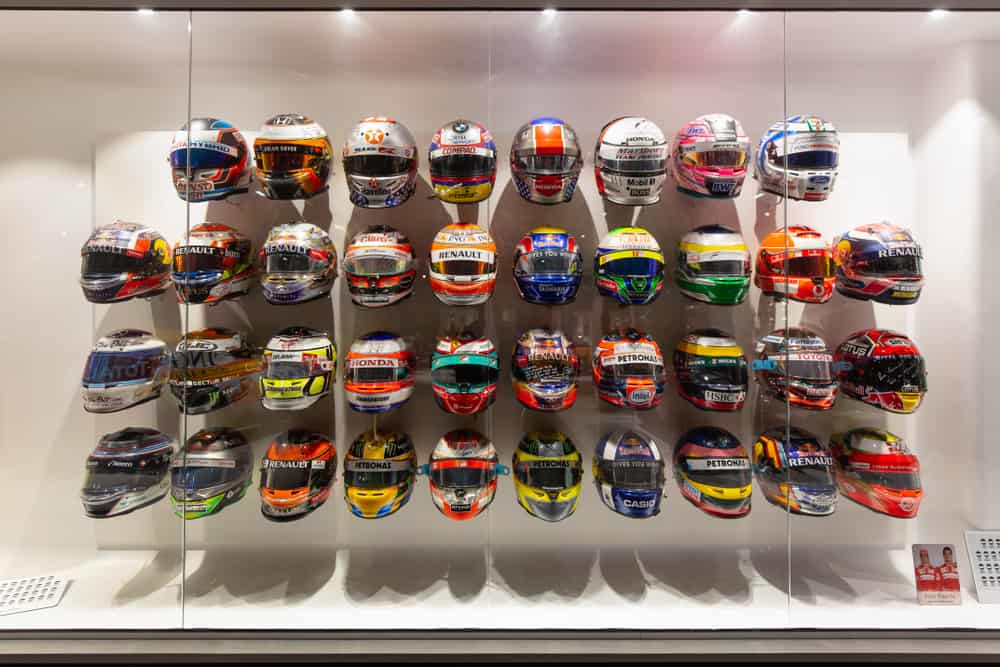
11. Stefan Bellof
Stefan Bellof was a promising young driver who died too soon. Like the old school drivers, he was very versatile, and he raced in various categories achieving good results apart from F1. He won the World Endurance Championship in 1984, and with a Porsche 956, he is the fastest man to complete a lap of the Nordschleife circuit. He died at the Spa-Francorchamps circuit in 1985.
His helmet design was spectacular and highly recognizable and even inspired the racing livery of his car, the Tyrrell 012.
The helmet consisted of a black base and had symmetrical red and yellow lines, forming an elegant combination that formed his country’s colors, Germany, and had his name written on the front.
In some races, the design of his helmet was extended to his car, with a black base and with the characteristic lines of the helmet, creating a very iconic and remembered set since the design of the helmet and the car were in perfect harmony.
12. Ronnie Peterson
Ronnie Peterson is one of the best drivers in F1 history who never won a championship. Peterson was one of the fastest and most admired drivers of the 70s, with 10 wins and 26 podiums. Jackie Stewart and Gilles Villeneuve were some of his admirers.
“Superswede,” as he was known, was recognized for his aggressive and fair driving and also for the design of his helmet, with the colors of the Swedish flag, which accompanied him throughout his sporting career.
The design is quite simple: dark blue background with yellow details. However, what most differentiated his helmet from the rest of the rivals was his yellow visor since everyone had it black. The helmet also had his first and last name inscribed in yellow imitating hand calligraphy.
He never changed the design of his helmet, except for the sponsors, such as John Player Special in yellow or Polar Caravans in white. At the 2014 Monaco GP, 40 years after his victory in the principality, his compatriot Marcus Ericsson paid tribute to him using his design for his helmet.
13. Michael Schumacher – 2000-2006
I could not miss this helmet in this top. Throughout his long sporting career, Michael Schumacher varied the design of his helmet over time. He started with one on a white base, the top part blue and with the large German flag around the helmet, and gradually it evolved more and more in red.
It is inevitable to think of Michael Schumacher and red, as well as his winning spell with Ferrari. That is why this helmet is the most representative of the “Kaiser.” Michael debuted the predominantly hot red helmet at the 2000 Monaco GP, and the colors of the German flag became less and less important.
The helmet’s most distinctive and iconic feature is the seven stars sprinkled across the top, which eventually became its seven world titles. Later, he added a Chinese dragon on each side of the helmet, which he would recover in his time with Mercedes, which was a very similar design to this helmet, but with certain variations due to the change of team and the different sponsors.
14. Sebastian Vettel – 2019 Monza Special
During his time at Red Bull, Sebastian Vettel was known for changing the design of his helmet in almost every race, wearing very original and extravagant designs. In his time with Ferrari, he did choose to wear the same design in most races, with slight variations on some occasions.
The design that he used in his time for Ferrari was quite simple but recognizable. It has become his most characteristic helmet: white base and the German flag vertically crossing the helmet. One of the nicest variations on this helmet was the one he wore for the 2019 Monza GP.
In this variation, the German flag is limited to the top, while the Italian flag replaces it at the front and rear. Also, the design is made to look like it is hand painted as in the 70s. It has a rough, second-hand look as if it were classic and used. On the side, there is his number, 5, with a fairly simple design, which also reminds us of classic decades, and the Ferrari logo looks quite good.
It is a design that could perfectly have been used by the drivers of the 60s and 70s.
15. Jacques Villeneuve
Son of the legendary Gilles Villeneuve and world champion in 1997, just his second year in F1, Jacques had great talent and were one of the fastest on the track.
His helmet reflects his eccentric personality, with an unusual design and full of bold colors. It could be said that he was the forerunner of the Daniel Ricciardo helmet style.
The upper part of the helmet is blue, forming a slit that, together with a pink band that surrounds the helmet, forms a “V” for Villeneuve. The front of the helmet is yellow, and it also ends up surrounding the helmet, although with a very small line. At the bottom of the helmet, there are still two more colors: dark green and red.
It is a quite original and strange helmet that he kept throughout his sporting career. Jacques says he drew it when he was little about his design, which is why it has so many colors, and that the “V” on the side was a coincidence.
Conclusion
F1 drivers’ helmets are part of their identity. As we have seen, many of them reflect the driver’s personality, as well as the history of each one or where they come from. Some designs have gone down in history beyond their owner.
These types of tops are never easy. There are a lot of iconic and beautiful helmets we’ve left out, and we may not match the ones we’ve added, but I hope you liked them and learned something.
Sources
- https://www.gpblog.com/en/news/57037/son-of-helmet-designer-explains-reasons-behind-senna-s-helmet.html
- https://www.motorsportmagazine.com/articles/single-seaters/f1/formula-1s-greatest-helmet-designs
- https://www.taringa.net/+autos_motos/cascos-historicos-mika-hakkinen_hh3zi
- Cascos históricos: Familia Schumacher (Parte I) – FÓRMU… en Taringa!
- https://www.taringa.net/+autos_motos/cascos-historicos-f1-ronnie-peterson_hkosj
- Cascos históricos F1: Jacques Villeneuve – FÓRMULA 1® en Taringa!
- Cascos históricos: Stefan Bellof – Autos y motos en Taringa!
- James Hunt – Wikipedia

